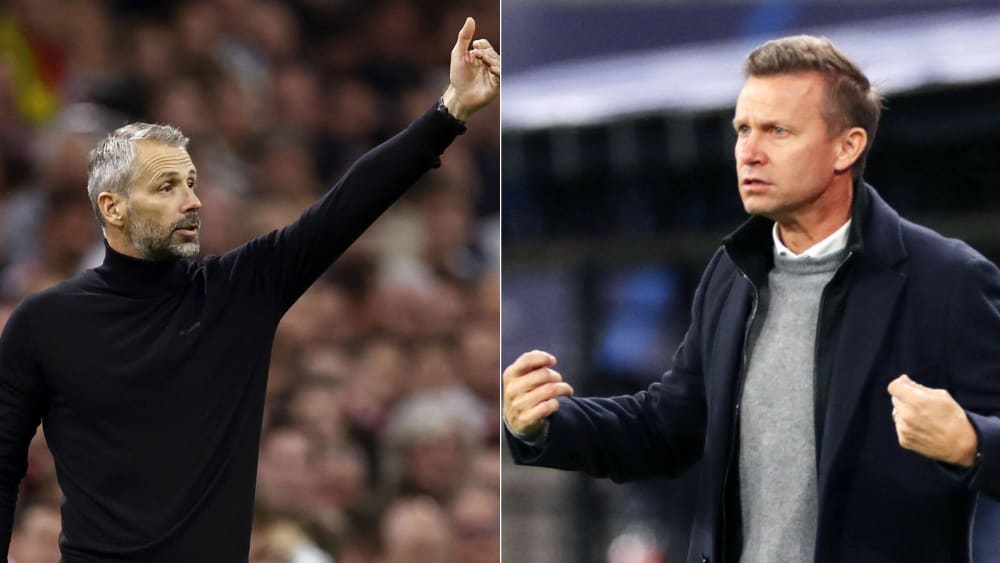In Salzburg, Jesse Marsch once succeeded Marco Rose, on Saturday they will meet for the first time as head coaches. Where do the two coaches differ – and how much RB DNA is in their style of play? A data analysis.
The leap year 2020 has given Jesse Marsch a razor-thin lead. The US American has been head coach of RB Salzburg for a total of 730 days – exactly 24 hours longer than his predecessor Marco Rose. Both spent two years at the Austrian top club before the call from the Bundesliga followed. They only competed against each other when Marsch was still co-coach in Leipzig and Rose coach in Salzburg. The first comparison between head coaches is scheduled for Saturday evening.
Why one of the two took the step from Salzburg to Leipzig that has been taken so many times before and the other did not, certainly had other reasons. But one thing is certain: the classic “RB football” – frequent and high pressing, many switching actions and direct play – is embodied by one more than the other.
Rose: More ball security, fewer goal chances – on both sides
Rose, the data show, is more concerned with ball security than Marsch. In both Mönchengladbach and Dortmund, his teams had more possession than Marsch with Salzburg and Leipzig. For better comparability, only international matches were counted in the past two seasons.
On the one hand, Rose’s more ball-oriented style of play means that they are more likely to meet orderly opponents, which means that the likelihood of goals is somewhat reduced and the value of Expected Goals is higher for Marsch’s teams. On the other hand, the Rose approach secures opponents’ counters in a more controlled manner, thus reducing big chances – in other words, Rose football results in fewer clear-cut scoring opportunities on both sides of the ball than Marsch football.
Under March it becomes more direct
With this comes the fact that Rose’s teams play fewer passes into the penalty area. As the opposition has more time to form up and form an orderly defensive unit, penetration into the penalty area also becomes more difficult. Marsch’s teams played an average of almost three more successful passes into the penalty area over the same period – mind you, despite significantly less possession. This is due to the direct play and the increased own switching actions, which the US-American stands for – classic RB-DNA.
The style of this type of football is characterised above all by the intensive and high pressing of the RB teams. Here, too, Marsch’s teams were much more active, with a total of almost 15 more pressing actions per game.
To what extent has Rose adapted?
While Rose is just ahead in pressing actions in the opponent’s third, the context is interesting here: the lead stems mainly from his first season with Mönchengladbach – or perhaps better: the first after Salzburg. Here, the Foals had almost twice as many pressing actions in the front third (53) as in the following season (28) and still significantly more than currently in Dortmund (35.2). Marsch’s numbers are much closer here and were higher than Rose’s across last and the current season.
An indication that Rose might have adjusted his approach after his first year in Gladbach – possibly also because the opponents were better attuned to it. Whether Marsch’s future also looks like this?





